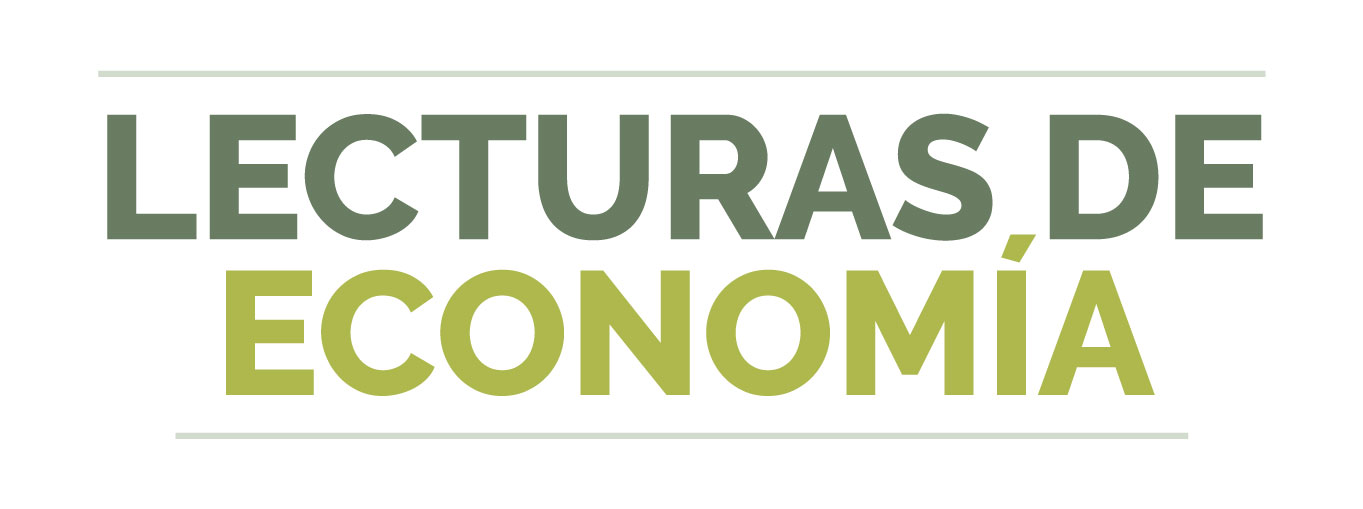Le prix de l'or : Une analyse de son comportement cyclique
DOI :
https://doi.org/10.17533/udea.le.n79a4Mots-clés :
cycle de l'or, ratio DJIA/GF, analyse de Fourier, prévisions à travers un réseau neuronalRésumé
L'or est une marchandise qui est considéré étant un refuge en cas de crise financière, mais lorsque les marchés boursiers sont en plein essor, les actions sont une alternative plus intéressante. Ceci donne naissance au cycle de l'or. Le ratio ente l'indice industriel Dow Jones et le prix de l'or (DJIA/GF) montre l'évolution du prix de l'or par rapport à la NYSE (New York Stock Exchange). Cet article a deux objectifs: premièrement, il s’agit de démontrer que le ratio DJIA/GF est très cyclique lorsqu’on utilise l'analyse de Fourier et, deuxièmement, il s’agit d’établir un modèle de réseau neuronal pour prédire le comportement de ce ratio entre 2011 et 2020. Pour ce faire, les événements économiques comme la Grande Dépression, la crise des années 70, le boom des années 50 ou bien la reprise des années 90, sont contrastés à la lumière du ratio DJIA/GF. Nous constatons que les prix de l'or évoluent de manière cyclique avec une période dominante de 37 ans et ceux-ci sont essentiellement influencés par les prix de l'énergie, par les marchés financiers et par les agrégats...
Téléchargements
Références
Aizenman, Joshua & Inoue, Kenta (2013). “Central banks and gold puzzles”, Journal of the Japanese and International Economies, Vol. 28, pp. 69–90.
Álvarez, Jose & Rodríguez, Eduardo (2011). “Long-term Recurrence Patterns in Late 2000 Economic Crisis: Evidences from Entropy Analysis of the Dow Jones Index”, Technological Forecasting and Social Change, Vol. 78, Issue 8, pp. 1332–1344.
Batten, Jonathan; Ciner, Cetin & Lucey, Brian M. (2010). “The macroeconomic determinants of volatility in precious metals markets”, Resources Policy, Vol 35, Issue 2, pp. 65–71.
Baur, Dirk G. & Mcdermott, Thomas K. (2010). “Is gold a safe haven? International evidence”, Journal of Banking and Finance, Vol. 34, Issue 8, pp. 1886–1898.
Cashin, Paul; McDermott, John C. & Scott, Alasdair. (2002). “Booms and Slumps in World Commodity Prices”, Journal of Development Economics, Vol. 69, Issue 1, pp. 277–296. Retrieved from http://www.sciencedirect.com/science/article/pii/S0304387802000627 (April 27,2013 ).
Christie–David, Rohan; Chaudhry, Mukesh & Koch, Timothy W. (2000). “Do macroeconomics news releases affect gold and silver prices?”, Journal of Economics and Business, Vol. 52, Issue 5, pp. 405–421.
Craig, Lee A.; Fisher, Douglas & Spencer, Theresa A. (1995). “Inflation and money growth under the international gold standard, 1850–1913”, Journal of Macroeconomics, Vol 17, Issue 2, pp. 207–226.
Devore, Jay L. (2006). Probabilidad y Estadística para Ingeniería y Ciencias. California, San Luis Obispo: International Thomson editores.
Kearney, Adrienne A. & Lombra, Raymont E. (2009). “Gold and platinum: Toward solving the price puzzle”, The Quarterly Review of Economics and Finance, Vol. 49, Issue 3, pp. 884–892.
Kitco (2013). 10 Year Gold. Retrieved from: http://www.kitco.com/charts/popup/au3650nyb.html (March 03, 2013).
Kreizig, Erwin (2006). Advanced Engineering Mathematics (9th ed). Hoboken, NJ: Wiley Eastern.John Wiley & Sons, Inc.
LBMA (2012). London Bullion Market Association. Retrieved from http:// www.lbma.org.uk/pages/index.cfm (March 15, 2013).
Lili, Li & Chengmei, Diao (2013). “Research of the Influence of Macro-Economic Factors on the Price of Gold”, Procedia Computer Science, Vol. 17, pp. 737–743.
Lothian, James R. (2002). “The internationalization of money and finance and the globalization of financial markets”, Journal of International Money and Finance, Vol. 21, Issue 6, pp. 699–724.
Marketwatch.com (2011). Dow Jones Industrial Average. Retrieved from http://www.marketwatch.com/investing/index/djia (December 21, 2011).
Mollick, Aandrè Varella & Assefa, Tibebe Assefa (2013). “U.S. stock returns and oil prices: The tale from daily data and the 2008–2009 financial crisis”, Energy Economics, Vol. 36, pp. 1–18.
Neuro Dimension Inc. (2012). Neuro Dimension. Retrieved from: http:// www.nd.com/neurosolutions/products/ns/whatisNN.html (September 21, 2012).
Parisi, Antonino; Parisi, Franco & Díaz, David (2008). “Forecasting gold price changes: Rolling and recursive neural network models”, Journal of Multinational Financial Management, Vol. 18, Issue 5, pp. 477–487.
Prechter, Robert (2009). Gold & Silver. Retrived from: http://www.bullionworks.com/images/Gold_Silver_Ebook.pdf (March 03, 2013).
Shachmurove, Yochanan (2011). “A historical overview of financial crises in the United States”, Global Finance Journal, Vol. 22, Issue 3, pp. 217–231.
Shafiee, Shahriar & Topal, Erkan (2010). “An overview of global gold market and gold price forecasting”, Resources Policy, Vol. 35, Issue 3, pp. 178–189.
Smith, Eric & Shubik, Martin (2011). “Endogenizing the provision of money: Costs of commodity and fiat monies in relation to the value of trade”, Journal of Mathematical Economics, Vol. 47, Issue 4-5, pp. 508–530.
Straßburg, Janko; Gonzàlez-Martel, Christian & Alexandrov, Vassil (2012). “Parallel genetic algorithms for stock market trading rules”, Procedia Computer Science, Vol. 9, pp. 1306–1313.
Timo, Hämäläinen; Klapuri, Harri; Saarinen, Jukka; Ojala, Pekka & kaski, Kimmo (1996). “Accelerating genetic algorithm computation in tree shaped parallel computer”, Journal of Systems Architecture, Vol. 42, Issue 1, pp. 19–36.
Williams, James L. (2012). Oil Prices History and Analysis. Retrieved from: http://www.wtrg.com/prices.htm (September 21, 2012).
Wolfram Mathematica (2013). Fourier Series. Retrieved from: http:// reference.wolfram.com/legacy/v8/ref/Files/FourierSeries.en/O_2.gif (July 17, 2013).
Yonaba, H.; Anctil, F. & Fortin, V. (2010). “Comparing Sigmoid Transfer Functions for Neural Network”, Journal of Hydrologic Engineering, Vol. 15, Issue 4, pp. 275–283.
Téléchargements
Publié-e
Comment citer
Numéro
Rubrique
Licence
Cette page, par Universidad de Antioquia, est autorisée sous une Licence d'attribution Creative Commons.
Les auteurs qui publient avec cette revue acceptent de conserver les droits d'auteur et d'accorder le droit de première publication à la revue, l'article sous licence sous une licence Creative Commons Attribution-NonCommercial-ShareAlike permettant à d'autres de le partager tant qu'ils reconnaissent sa paternité et sa publication originale dans ce journal.
Les auteurs peuvent conclure des accords contractuels supplémentaires et distincts pour la distribution non exclusive de la version publiée de la revue (par exemple, la publier dans un référentiel institutionnel ou la publier dans un livre), à condition que ces accords soient sans but lucratif et être reconnu comme la source originale de publication.
Les auteurs sont autorisés et encouragés à publier leurs articles en ligne (par exemple, dans des dépôts institutionnels ou sur leurs sites Web), car cela peut conduire à de précieux échanges ainsi qu'à une plus grande citation des travaux publiés.







